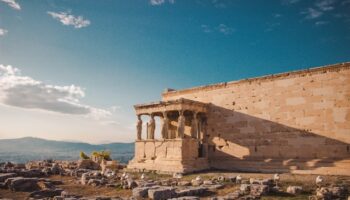Italy is a country of timeless beauty, rich culture, and diverse landscapes. Whether you’re drawn to its historic cities, rolling vineyards, or picturesque coastlines, choosing the right time to visit is key to making the most of your trip. In this guide, we’ll explore the best times to visit Italy, taking into account weather, events, and seasonal highlights.
Spring: The Blossoming Beauty (March to May)
Spring is arguably the best time to visit Italy. As winter fades, the country comes alive with blooming flowers, mild temperatures, and fewer crowds compared to the peak summer months.
Why Visit in Spring?
- Perfect Weather: The temperatures are generally mild, ranging from 10°C (50°F) to 20°C (68°F), making it ideal for exploring cities, hiking, and outdoor dining.
- Fewer Tourists: Compared to summer, spring sees fewer tourists, allowing for a more relaxed experience at popular sites like the Colosseum, the Vatican, and the Uffizi Gallery.
- Festivals: Spring hosts a variety of local festivals, such as Easter celebrations and the famous “Festa della Primavera” in Florence, where the city welcomes the season with flowers, music, and parades.
Where to Go in Spring
- Rome: Enjoy the city’s historic sites without the summer crowds.
- Tuscany: The countryside is lush and green, perfect for wine tours and scenic drives.
- Amalfi Coast: With its mild temperatures, spring is ideal for exploring this stunning coastal region before the summer rush.
Summer: The Vibrant Heart of Italy (June to August)
Summer is peak tourist season in Italy, with warm temperatures, lively festivals, and bustling beaches. This is the time to soak in the sun and experience Italy’s vibrant culture.
Why Visit in Summer?
- Festivals and Events: Summer is festival season in Italy. Highlights include the Palio di Siena, a historic horse race in Siena, and the Venice Biennale, an art extravaganza that attracts visitors from around the world.
- Beaches and Coastal Towns: The warm weather is perfect for beach holidays. The Italian Riviera, Amalfi Coast, and Sicily are popular summer destinations.
- Outdoor Dining and Nightlife: Enjoy alfresco dining in piazzas and vibrant nightlife, especially in cities like Rome, Milan, and Florence.
Where to Go in Summer
- Cinque Terre: These picturesque coastal villages are a must-see, with colorful houses perched on cliffs above the Ligurian Sea.
- Sicily: Experience the island’s stunning beaches, ancient ruins, and delicious cuisine.
- Florence: Despite the crowds, Florence is a summer gem with its art, architecture, and summer events.
Autumn: The Golden Harvest (September to November)
Autumn in Italy is marked by cooler temperatures, beautiful fall foliage, and the harvest season. This is a fantastic time to visit for food lovers and those who appreciate the quieter side of Italy.
Why Visit in Autumn?
- Harvest Season: Autumn is the season for wine and olive harvests. This is the perfect time to visit vineyards and enjoy wine tasting tours, particularly in regions like Tuscany and Piedmont.
- Mild Weather: With temperatures ranging from 15°C (59°F) to 25°C (77°F), autumn offers comfortable conditions for sightseeing and outdoor activities.
- Cultural Events: The Venice Film Festival, one of the most prestigious in the world, takes place in early September, drawing filmmakers and stars from across the globe.
Where to Go in Autumn
- Tuscany: The region’s vineyards and olive groves are at their best during the harvest season.
- Venice: Enjoy the city’s canals and architecture with fewer tourists compared to the summer months.
- Piedmont: Known for its truffles and wine, Piedmont is a top destination for food enthusiasts during autumn.
Winter: The Quiet Charm (December to February)
Winter in Italy offers a completely different experience. While the weather can be chilly, especially in the north, this season has its own charm, with fewer tourists, festive markets, and opportunities for winter sports.
Why Visit in Winter?
- Festive Atmosphere: Italy celebrates the holiday season with gusto. Christmas markets, especially in cities like Florence, Rome, and Milan, are a highlight, offering unique gifts, decorations, and seasonal treats.
- Lower Prices and Fewer Crowds: Winter is the off-season in Italy, meaning lower prices for accommodations and flights, along with fewer tourists at major attractions.
- Winter Sports: The Italian Alps are a haven for skiing and snowboarding enthusiasts, with world-class resorts like Cortina d’Ampezzo and Val Gardena.
Where to Go in Winter
- Rome: The city is beautifully decorated for the holidays, and you can enjoy iconic sites like the Vatican and the Colosseum without the usual crowds.
- Dolomites: Ideal for winter sports, this region offers stunning mountain landscapes and excellent ski facilities.
- Naples: Experience the unique Christmas traditions, including the famous Neapolitan nativity scenes.
Conclusion: The Best Time Depends on Your Preferences
The best time to visit Italy depends largely on what you want to experience. Spring and autumn offer mild weather and fewer crowds, making them ideal for sightseeing and cultural experiences. Summer is perfect for beach holidays and festivals, while winter provides a quieter, more intimate experience with the added bonus of festive cheer and winter sports.
No matter when you choose to visit, Italy’s rich history, stunning landscapes, and warm hospitality ensure an unforgettable experience.





